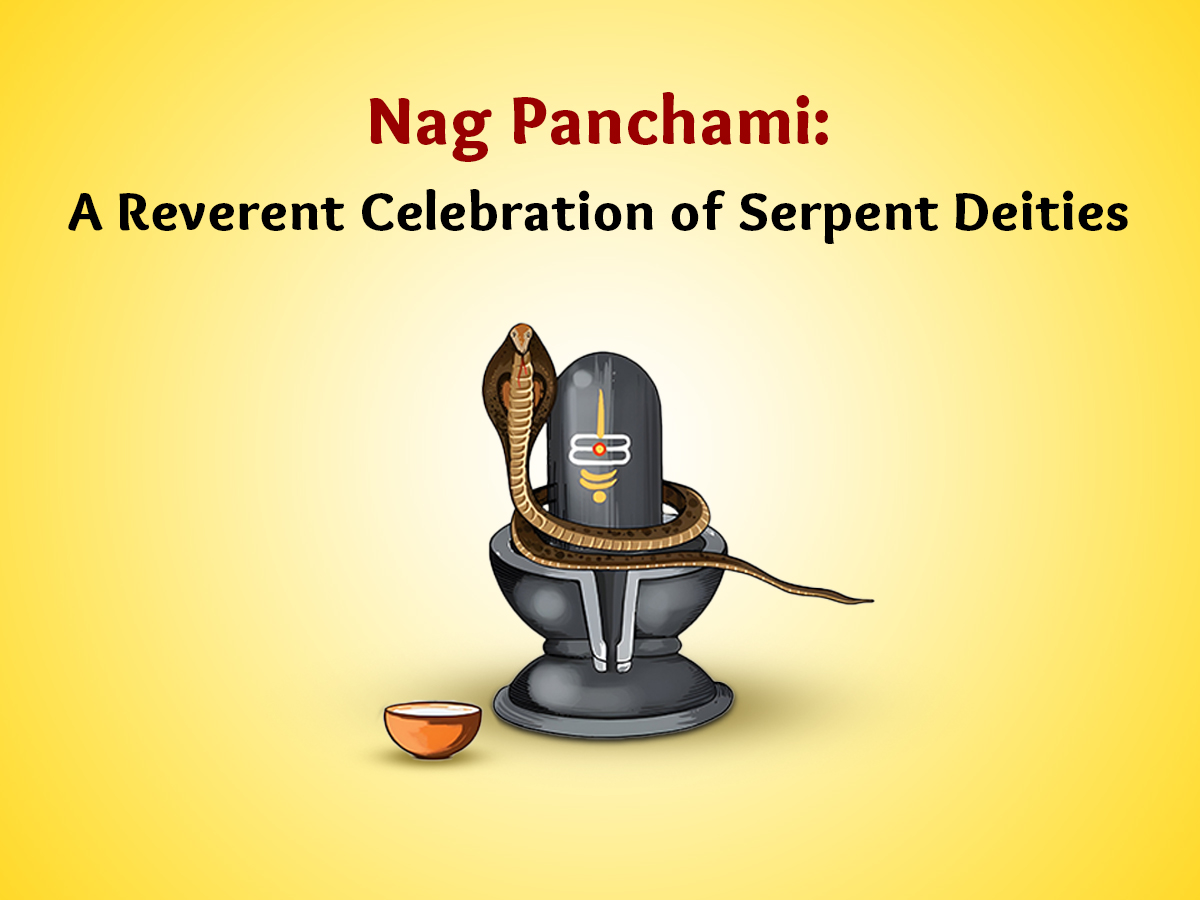Nag Panchami: A Reverent Celebration of Serpent Deities

Nag Panchami, also known as Naga Panchami, is a significant Hindu festival dedicated to the worship of snakes, particularly serpentine deities such as Nag Devta. Celebrated on the fifth day of the month of Shravana on August 9th, 2024, Nag Panchami holds a unique place in the hearts of devotees and is marked by specific rituals, practices, and spiritual significance. This blog post delves into the origins of Nag Panchami, its traditional practices, and the cultural importance of incense sticks in the context of this auspicious occasion.
Origins of Nag Panchami
The origins of Nag Panchami can be traced back to ancient Hindu texts and scriptures, including the Mahabharata and Puranas. According to folklore, snakes hold a vital position in Hindu cosmology, symbolizing both creation and destruction. They are believed to be guardians of treasures and are associated with mysticism and spirituality.
One popular legend recounts that Lord Krishna once subdued a mighty serpent, Kaliya, that threatened the villagers of Vrindavan. By dancing on Kaliya’s multiple hoods, Krishna not only saved his devotees but also restored peace in the region. This tale, among others, contributes to the reverence that Hindus hold for serpents.
The festival of Nag Panchami embodies gratitude and reverence towards these beings, seeking their blessings for health, prosperity, and protection from harm.
Rituals and Celebrations
The celebration of Nag Panchami involves a variety of rituals that primarily revolve around the worship of serpents. Devotees often observe the following practices:
Preparing a Sacred Space: Homes are cleaned and decorated, often with colorful rangolis (traditional floor designs) adorning the entrance. This creates an inviting atmosphere for the revered snakes, which are seen as protectors and embodiments of divine energy.
Offering Milk and Sweets: It is customary to offer milk and sweets to snake images or idols placed in households and temples. Milk, especially, is considered a favorite offering, representing purity and devotion. Many devotees also place a pot of milk in their yards or gardens as an offering to any snake that may visit in the future.
Vermillion and Flowers: Devotees often adorn snake idols with vermillion (sindoor) and flowers, symbolizing respect and devotion. The act of decorating these idols shows intention and reverence, mirroring the personalized relationship individuals share with the divine.
Reciting Prayers and Bhajans: It is customary to recite special prayers and hymns dedicated to serpent deities. Many families gather to chant these venerations, strengthening their spiritual connection and invoking blessings.
Visiting Temples: On Nag Panchami, many devotees visit temples dedicated to snake gods. Offerings are made, and rituals are performed by priests, ensuring that the traditions are upheld in a community setting.
Mantra to Chant
Anantham vasukim sesham padmanabham cha kambalam|
Sankhapalam dhartarashtram takshakam kaaliyam tatha||
Etani nava namani naganam cha mahatmanaam|
Sayankale pathennityam pratahkaale visheshatah |
Tasya Vishbhayam Naasti sarvatra vijaya bhavet ||
The Role of Incense Sticks
The burning of incense sticks holds immense significance during the rituals of Nag Panchami. Incense, made from a variety of aromatic natural substances, is used in many cultures for centuries during religious ceremonies. Here's why incense is especially relevant during Nag Panchami:
Creating a Sacred Atmosphere: The fragrant smoke from incense sticks purifies the space, creating an environment conducive for worship. The pleasant aromas stimulate the senses and help devotees feel more connected to their spiritual intentions.
Enhancing Meditation and Focus: Incense sticks are often used during prayer and meditation, helping individuals focus and find tranquility. The act of lighting incense becomes a meditative ritual, allowing for deeper introspection and connection with divine energies.
Symbolism of Purity: The smoke produced by incense sticks symbolizes the transcending of earthly bonds. In Hindu philosophy, incense represents prayers rising towards the heavens, echoing the supplications of the devotees to deities, including the revered snake gods.
Conclusion
Nag Panchami is more than just a celebration of serpent deities; it embodies the values of respect, harmony, and gratitude towards nature. As devotees engage in rituals that are steeped in tradition, they simultaneously embrace a contemporary understanding of ecological balance.
By incorporating incense sticks into these practices, the experience becomes enriched, fostering a sense of spirituality that transcends time and culture. Nag Panchami serves as a reminder of the interconnectedness of life, inviting everyone to honor the earth and its creatures while basking in the divine blessings that flow through the air, sacred as the incense smoldering in the holy light of devotion.





